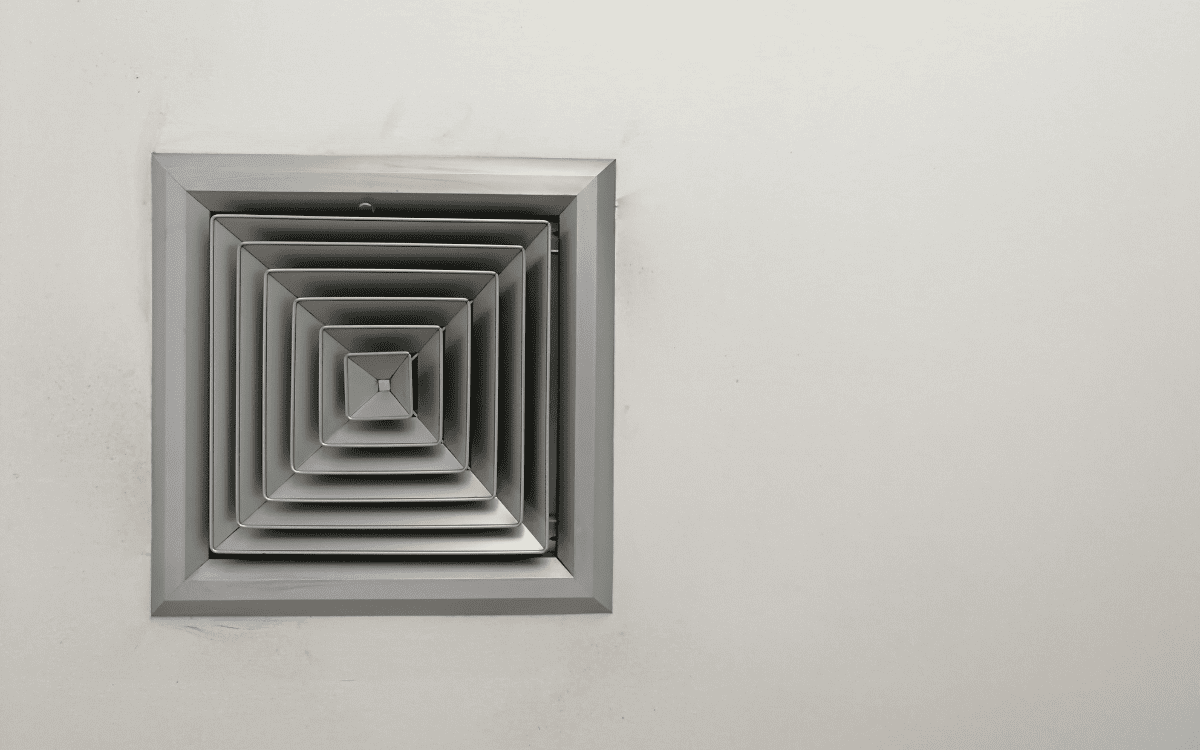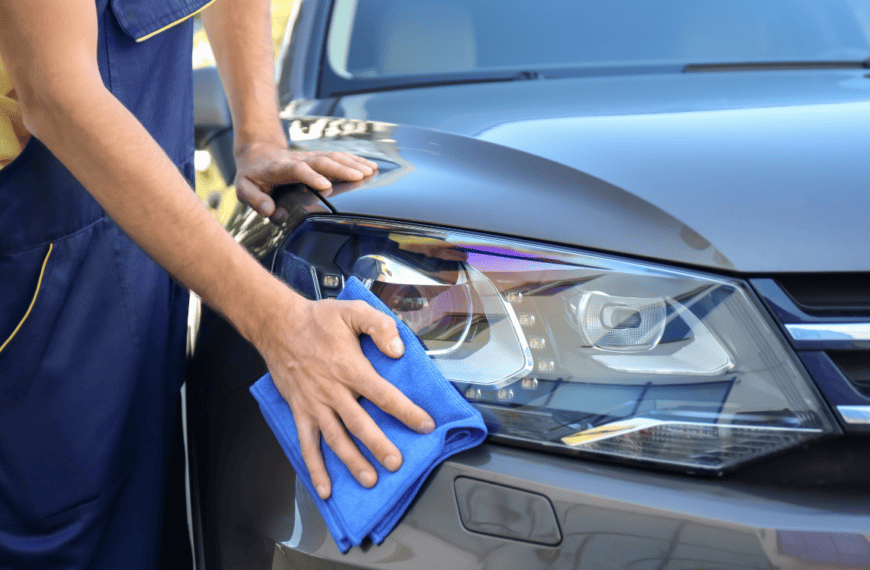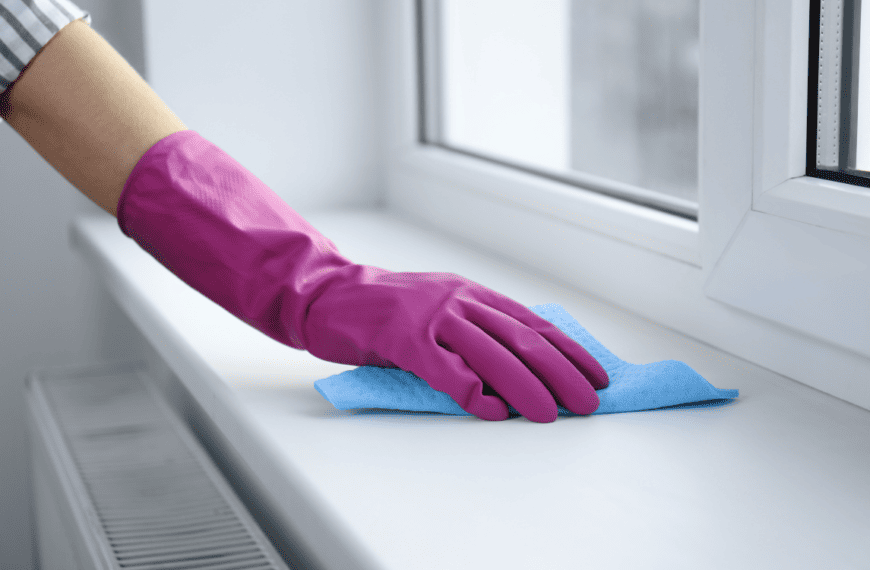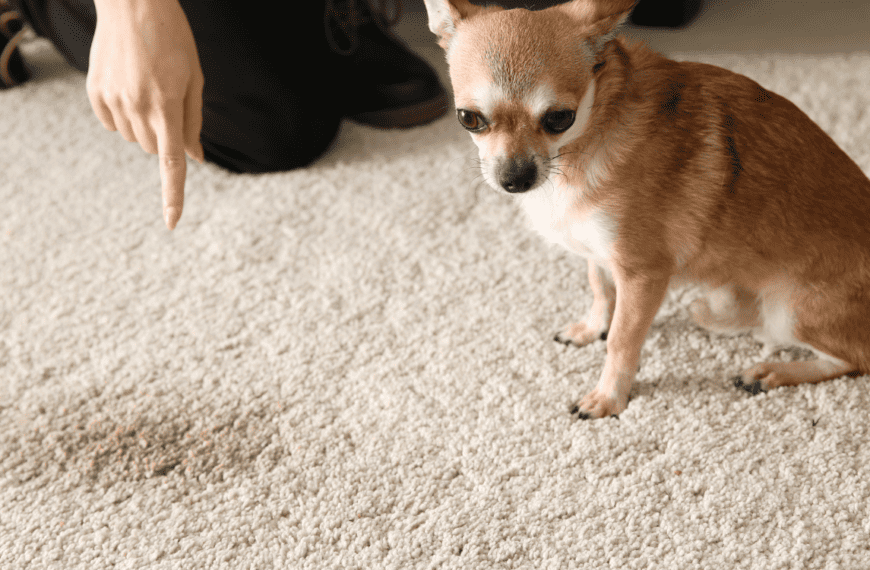Want to breathe easier and save money? According to the EPA, indoor air pollutants can be 2 to 5 times higher than outdoors. Learn how to clean air ducts yourself to reduce these pollutants, lower your energy bill, and improve your home’s air quality. Follow this guide to save hundreds of dollars and keep your family healthier.
Before You Begin: Mistakes To Avoid
Your HVAC system is likely one of the most expensive systems in your home. Don’t jump into this air duct cleaning process without first understanding the basics of your heating and cooling system.
- Turn off heat and cool while cleaning air ducts; only the fan setting is necessary
- Wear protective gear such as gloves, dust mask, and goggles
- Place drop cloth near the vents to help with the mess
- Use a HEPA vacuum to ensure dust particles are not spread through the home
- If you are concerned your system has asbestos, have a professional come in and assess the situation before getting air ducts cleaned
How Do HVAC Ducts Work?
Before you start this process of cleaning your air ducts, here is a basic description of how your HVAC ducts work, what they do, and how they function. Many people ask if it is possible to clean your own air ducts. Cleaning your own air ducts is entirely possible with the right air duct cleaning tools, but most importantly, you have to understand the way your system works.
- Ductwork is a network of pipes or tubes that bring air throughout your home
- When dealing with ductwork, there are both supply and return ducts
- Supply ducts bring cool air to the different rooms in your home
- Return ducts remove air to be reconditioned through the HVAC unit
- The supply and return ducts work together to do two things: keep airflow in the home and achieve the proper temperature throughout the space
- Return ducts need to be cleaned as they accumulate dust, allergens, and debris from recirculating the air in the home; dirty return ducts can impact indoor air quality
Tip: the return ducts are the larger vent/grills, whereas the supply ducts are the smaller ones typically seen on the ceiling of a room not much larger than a sheet of paper.
How To Clean Air Ducts Yourself
Cleaning air ducts is something that you can do on your own, but you do have to make sure you have the right tools. A high powered vacuum cleaning with a HEPA filter is a must have. In addition, don’t start this process until you have the proper safety gear.
Supplies and Tools
- Screwdriver
- High powered vacuum cleaner with HEPA filter like Vevor Wet/Dry Vac
- Paper towel
- Lint free cloth
- Dust mask
- DEWALT Safety Goggles
- Kaygo Safety Work Gloves
Step-By-Step Process
- Prepare for cleaning by putting on gloves, safety goggles, and dust mask; turn off the heat and cool modes of the HVAC and then turn off the system at the circuit breaker
- Remove the return vent covers, clean with paper towels, mild soap, and water, or the vacuum hose, then set aside to dry completely
- Cover the supply vents with paper towels to ensure that additional dust does not dispense during the cleaning process. Secure the paper towels with tape
- Set your system to on (fan only), use a high-powered vacuum cleaner (I recommend Vevor Wet/Dry Vac) and insert into the duct as far as possible to dislodge dust and debris from inside the return ducts; the Vevor Wet/Dry Vac has an agitation device and a cleaning brush to make this process more efficient
- Wipe down any area inside the return air duct covers within reach with a lint free microfiber cloth. If mold is visible, use a mild detergent or duct cleaning agent
- Once they are completely dry, replace AC filters and return vents to their original position
- Test the HVAC system on heat or cool mode to ensure it is working properly. Run it for a few minutes and check for any unusual noises or smells. Remove all paper towels that were placed on supply vents
Warning: if your home was built before 1980, there is a chance that the insulation or even the tape on your air ducts could contain asbestos fibers. If you think this is an issue, call in an asbestos abatement professional before you clean your air ducts.
When Do Air Ducts Need Cleaning?
I like to set a calendar for myself when it comes to certain cleaning projects around the house. Cleaning air ducts is an annual project for me, but filter replacement happens quarterly. However, there are times when air duct cleaning is necessary because of a situation or event that occurred in the home. These include:
- Visual inspection shows that tape or sealants have started to deteriorate
- You recently had a home renovation or remodel that created dirt and dust at an abnormally high level
- Pest damage and animal nests have led to dirty air ducts and potential contaminants
- Mold growth is present (don’t mess with this one yourself; call in a professional)
- Ductwork is older than 1980, where asbestos may be a problem
- Clogged ducts and poor airflow through the supply vents
- System inefficiency and energy bills that seem out of the ordinary (I recommend asking two to three neighbors with similar sized homes and household members to get a rough idea for what’s normal)
DIY vs. Professional Air Duct Cleaning Services
Before I learned about cleaning ducts, I had done a little research to see how much it’d cost to hire a professional. Most prices were between $400 and $1500 for an air duct cleaning service. After calling around five different companies, and being told that I had to wait another week or two, I decided to make DIY duct cleaning my next project.
Yes, I wanted to save money, but more importantly, I felt that if my duct system needed more frequent cleaning, I didn’t want to have to schedule and wait every time.
The advantages of DIY air duct cleaning include:
- Clean on your own time
- Save some cash
- Keep dust buildup in check before it spirals out of control
The downsides of DIY air duct cleaning are:
- Must have the proper tools
- Can cause allergies and irritation if you’re sensitive to dust
- Can’t deal with mold or asbestos issues
- Dealing with dirty ducts is no fun!
When it comes to professionals, the negatives include having to find someone, work with their schedule, and ensure their pricing is fair. However, professionals have much more efficient tools specifically made for cleaning HVAC air ducts.
Professionals will be able to dislodge and remove contaminants more effectively, using brushes and tools that don’t damage your system. In situations where your return air grill plates or even the supply duct is completely coated in dust or dirt, hiring a professional may be your best option.
Tips for Hiring a Professional To Clean Air Ducts
When you hire a professional to clean air ducts, make sure they know what they are doing. Someone who shows up with a pet hair vacuum and a toilet brush and tells you they are ready to save you from all your health troubles is likely not a good choice.
Here are my top tips for hiring a professional to clean your air ducts:
- Have the professional explain their process to you and the tools that they use to complete it
- Determine if they are going to replace the air filter as part of the process
- Be very careful with chemical treatments and recommendations as they are often not necessary, and there is not much evidence that they make your air quality any better
- Look for the right license and certification. For example, in California, HVAC professionals are required to carry a C-20 HVAC
- See if you have friends or family that have used someone they would recommend
- When they are finished with the cleaning, turn the heat and cool mode on to ensure that everything is working BEFORE the professional leaves your home
What Is the Easiest Way To Clean Air Vents?
Having a professional clean your air ducts and vents is certainly the easiest way, but it won’t be the most economical. Using a premium HEPA vacuum and completing the process yourself is really not that difficult. You just need to take the proper safety precautions.
Proper Maintenance of Air Ducts
Once you have your air ducts clean and new air filters in place, it’s best to try and keep them as clean as possible. You don’t want to look up in a few weeks and see your supply vent is already covered with dust and particles.
- Change your HVAC filters regularly to ensure they are catching dust before it spreads through the duct system
- Don’t place things like furniture or cabinets in front of the vents to help keep down the amount of dust that can collect near it
- Vacuum your home at least once a week; for homes that tend to accumulate dust more quickly, try to vacuum more than once a week
- Use a humidity monitor to ensure that the environment in the air ducts is not creating mold
- Never use steam to clean your air ducts; once moisture is trapped, mold will accumulate and decrease your air quality significantly
- If you see standing water or a water leak, contact a professional immediately
- Have a professional come in once a year and do a complete HVAC inspection with a new HVAC unit; this is sometimes included in the package price
- Every time that your HVAC is serviced, check for the following: all drain pans and cooling coils are cleaned, and air ducts are sealed and insulated
- Ductwork should be cleaned every 3 to 5 years, and more often if there are issues with loose dust in the home or a visible accumulation around the return duct
What Are the Pros and Cons of Duct Cleaning?
Air duct cleaning can help decrease the amount of dust in your home, making it easier to breathe. Improved air quality and energy efficiency are the top reasons why homeowners want their duct work cleaned each year. The better you take care of your entire system, the longer it is going to last.
While air duct cleaning can remove a lot of dust, there is no solid scientific proof that clean ducts improves your breathing or well-being. But, having a professional come in and analyze air quality can give you peace of mind about its condition and your overall safety.
Frequently Asked Questions (FAQ)
What Are the Signs of Mold in Air Ducts?
Signs of mold in air ducts include visible mold growth and or a musty smell coming from the supply registers. If you have a history of water damage or flooding, air ducts could be moldy. Additional indicators may include respiratory issues or allergies among household members.
Can I Use Chemical Cleaners in My Air Ducts?
Chemical cleaners should not be used in air ducts. Not only can the cleaners dissipate into the home and spread harmful chemicals, but they can break down the connections between your air ducts, leaving you with a system that is not properly sealed.









